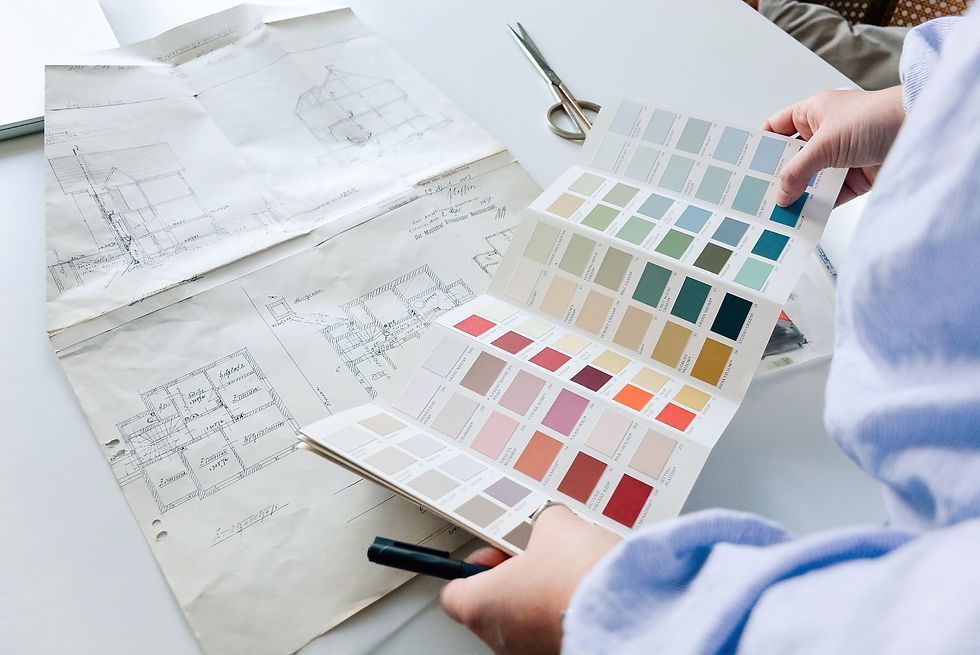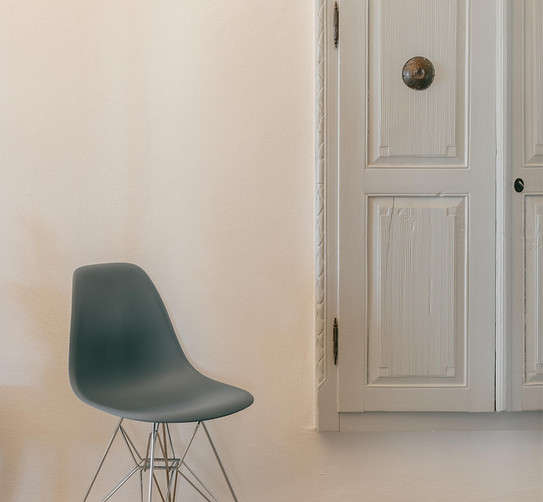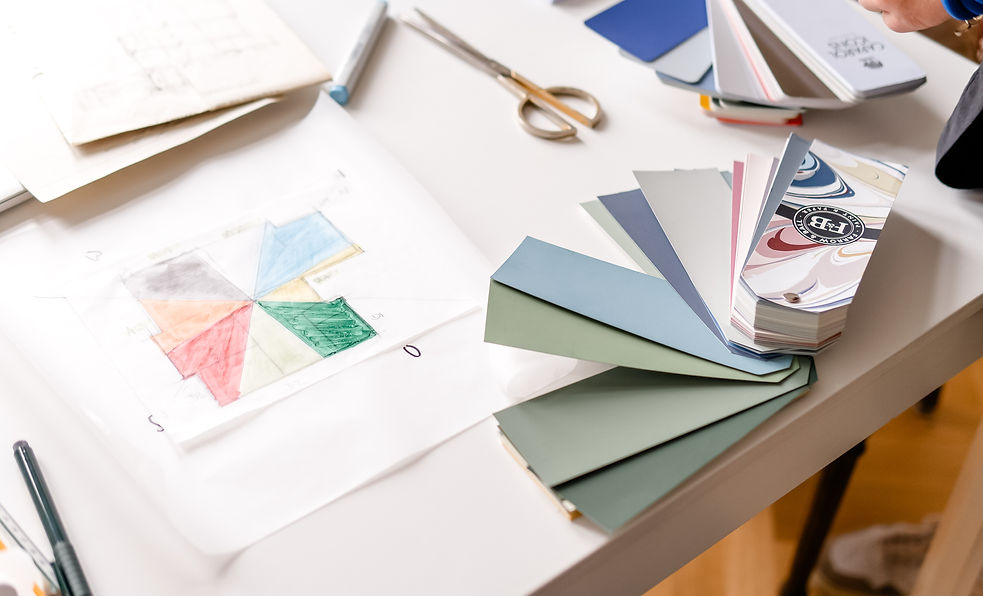


Feng Shui – “Where focus GOES energy flows.”
YES!
Let us talk about energy-
and Feng Shui!
Or better said: about rooms that feel really good.
Because yes – Feng Shui is part of what Studio Hilde does. Because rooms are more than just pretty, they have an impact. We mean that goooooood, old spatial energy. That thing you feel when you enter a room and think, "I feel kind of comfortable here!" or "Something doesn't feel quite right here." That's exactly what Studio Hilde is interested in. Because rooms tell a lot more than meets the eye.
Have you ever had the feeling that your home is looking forward to seeing you?
As if your favorite armchair were sighing softly with relief, the lamp shining a little warmer - and the apartment whispering a silent "Welcome home... you're finally back!".
What does my home actually look like? Not just visually, but also atmospherically?
Does it embrace me? Does it give me strength, peace, and clarity? Or rather, to-dos and unanswered questions? Do I feel safe and supported? Or simply furnished? A home is more than walls and furniture. It is a mirror of life, a space that breathes, empathizes, and participates.
And sometimes all it takes is a small detail. A different perspective, a new balance, to make everything feel like home again.


"WHERE DOES
MY HOME
RESONANte
WITH JOY?"
Interior design meets spatial energy:
As an interior designer, I combine my passion for design with a deep understanding of the principles of Feng Shui. Upon request, I integrate these principles into my work, creating not only appealing and harmonious living and working environments, but also energetically balanced and clear spaces that are beneficial. My goal is to create an environment that has a positive impact on well-being, quality of life, and success. This isn't about dream catchers, Chinese characters, or visible symbols. The approach pursued here combines Feng Shui with contemporary design. Discreet, individual, never dogmatic. Not visible, but tangible.
Where does Feng Shui come from:
Feng Shui is an ancient Chinese practice rooted in the observation of nature. Originally, it was used to find settlement sites that were in harmony with wind, water, the cardinal directions, and the landscape—in other words, places where life could flourish. Over time, Feng Shui has evolved and is now used worldwide to design spaces to support the flow of energy, known as Qi (Chi). The foundation is always the life energy that flows through all things and is influenced by the environment.

The term
"Feng Shui"
means translated
"Wind and water."
The basic principles of Feng Shui:
Yin & Yang
At the heart of this idea is the principle of yin and yang: two seemingly opposing forces that are not mutually exclusive, but rather interdependent. One cannot exist without the other.
In design, this means consciously allowing contrasts – putting them in relation to one another – and thus creating an atmosphere that is lively, balancing and powerful at the same time.
5 elements
In addition, the five elements – wood, fire, earth, metal, and water – play a central role. Each element brings its own quality, color, form, and dynamics. Used in harmony, they promote balance, vitality, and a good sense of space.
It’s not just about designing beautifully – it’s about making it feel palpably harmonious.
Bagua
The Bagua is a kind of energetic map divided into eight areas of life, each associated with various aspects of life such as wealth, career, family, love, health, and knowledge. By placing objects in these areas, the energy can be specifically influenced.
Qi Flow
An invisible force that works in all living things—in nature, in people, and even in our spaces. In Feng Shui, Qi is what connects: movement and stillness, inside and outside, material and immaterial. It is the energetic pulse of a place.
Feng Shui can be applied in various areas of life, including apartments, houses, and offices. It's important to note that the application of Feng Shui is often individual and depends on personal preferences, culture, and other factors. Every consultation is customized—from the targeted optimization of individual areas to the holistic analysis of a living or working space. Sometimes it's just a small detail, sometimes it's about the big picture.
How does a Feng Shui consultation work?
Very relaxed, but quite concrete and structured.
This is what a collaboration typically looks like:
01
Initial contact and getting to know each other
We'll discuss your wishes and goals. I'll explain my approach and the consultation process.
02
Quotation preparation
Based on our conversation, I'll create a customized quote outlining the available services and the next steps. Once you've decided, we'll get started!
03
Analysis of the spatial situation
Based on a room inspection, photos or floor plans, I evaluate the energy flow (Qi), the Bagua, Yin & Yang and the five elements.
04
Individual concept
I develop tailored recommendations on:
- Furniture placement & energy flow
- Color, material & lighting concept
- Strengthening certain areas of life
05
Implementation and support (planning and construction)
You decide whether you implement the recommendations yourself or whether I accompany you.
06
Conclusion and follow-up (if desired)
After implementation, we'll review the results together. Further fine-tuning is possible upon request.

